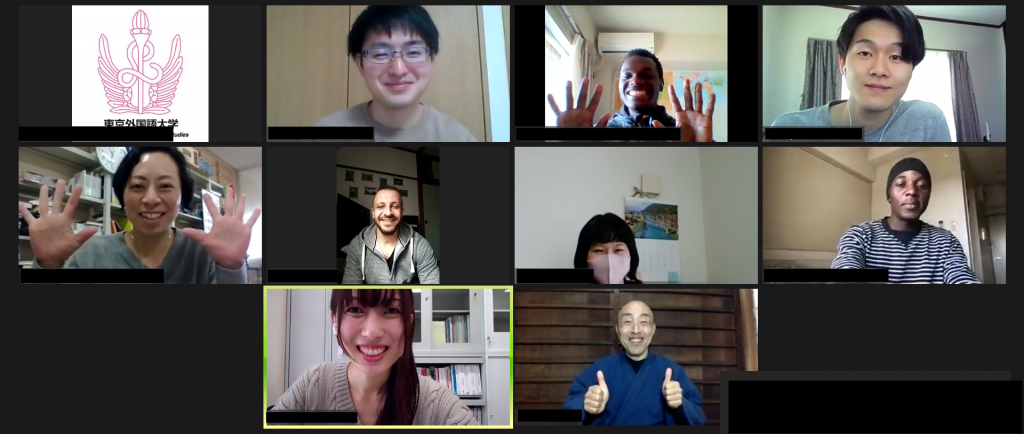春休み期間中の3月、大学の世界展開力強化事業(アフリカ)が実施したオンラインの瞑想ツアーに参加しました。母校PIASSで日本人の先生から仏教や神道について学びもともと瞑想に興味のあったジャスタスは、僧侶の方のガイドのもとでマントラを唱えながら瞑想を体験し、心をリフレッシュできたそうです。このツアーをきっかけに瞑想についてさらに詳しく知ろうと、その歴史についても調べています。
以下、ジャスタスのエッセイです。

I was invited to participate in the online meditation tour organized by the Tokyo University of Foreign Studies, in collaboration with the Inter-University Exchange Project (Africa). Before I come to Japan, I was already interested in the concept of meditation which was introduced to me while attending one of my courses titled Religion and Conflict at my home university (Protestant Institutes of Arts and Social Sciences, Rwanda). In this course, my Japanese professor Dr. Kazuyuki Sasaki sensei introduced Buddhism and Shintoism beliefs and practices. Among these practices was the concept of meditation and this is how I got interested in meditation and thus, it was an opportunity for me to attend.
Back to the tour, the chief guest was the Japanese professional monk from Osaka. interestingly, he has been a Buddhist monk for nearly 20 years, he worked in Shitennoji Temple for 12 years as a monk while doing zen meditation. He had been doing guided meditations for Airbnb guests for five years and welcoming nearly 4,000 guests annually. He believed that "meditation is one of the best ways for people to find a better life via a healthy body and mind..".
The tour kicked off with self-introduction in which we gave our names, where we come from, and why we were interested in meditation. Through the introduction, most participants expressed their interest in meditation too. Some of them had practiced meditation and confessed how it had helped them to reduce their body pressure and others how it helps them to concentrate or get good sleep.
The guest leads the rest of the discussion, he first asked us how many times a person breathes each day and later asked why people breathe too fast while doing certain activities. He gave a fair tell scenario of two ladies who had breast cancer and they kept listening to the same song after three months, cancer had healed. The whole discussion was educative and at the same time funny, the guest was really lively.
We then started the meditation process, the guest guided us on the procedure to be followed and later started meditating. We closed our eyes, took a deep breath, relaxed the mind, and then we had 20 minutes of chanting a mantra song which repeatedly sung "M BALADA HANDOH MAY UN" and later on, we had 10 minutes of meditation by deeply breathing in and out silently. After we were asked how we felt and some members said it was a bit hard to concentrate while repeating the mantra others felt sleepy. Personally, I feel a bit fresher than at first even though my mind kept forcing me to look on the screen and see how others were mediating. In the end, I had managed to interact and made more Japanese friends. Actually, meditation attracted my curiosity and it forced me to find out its origin in Japanese society.
I found that the name meditation itself was introduced by Monk Guigo II in 12 century AD, it came from the Latin name "meditatum" which means to ponder or think carefully. The practice of meditation is said to have involved Vedantism, which is a Hindu tradition in India, around 1500 BCE. However, historians believe that meditation was practiced before this time, as early as 3000 BCE. It believed that, between 600-500 BCE, the development of other meditation forms was recorded in Taoist China and Buddhist India. I found that meditation first reached Japan through a Japanese monk, Dosho, who discovered Zen on a visit to China in 653 and introduced the practice of meditation to Japan upon his return to the country by opening the first hall for meditation. The practice grew significantly in Japan from the 8th century AD up to date.

